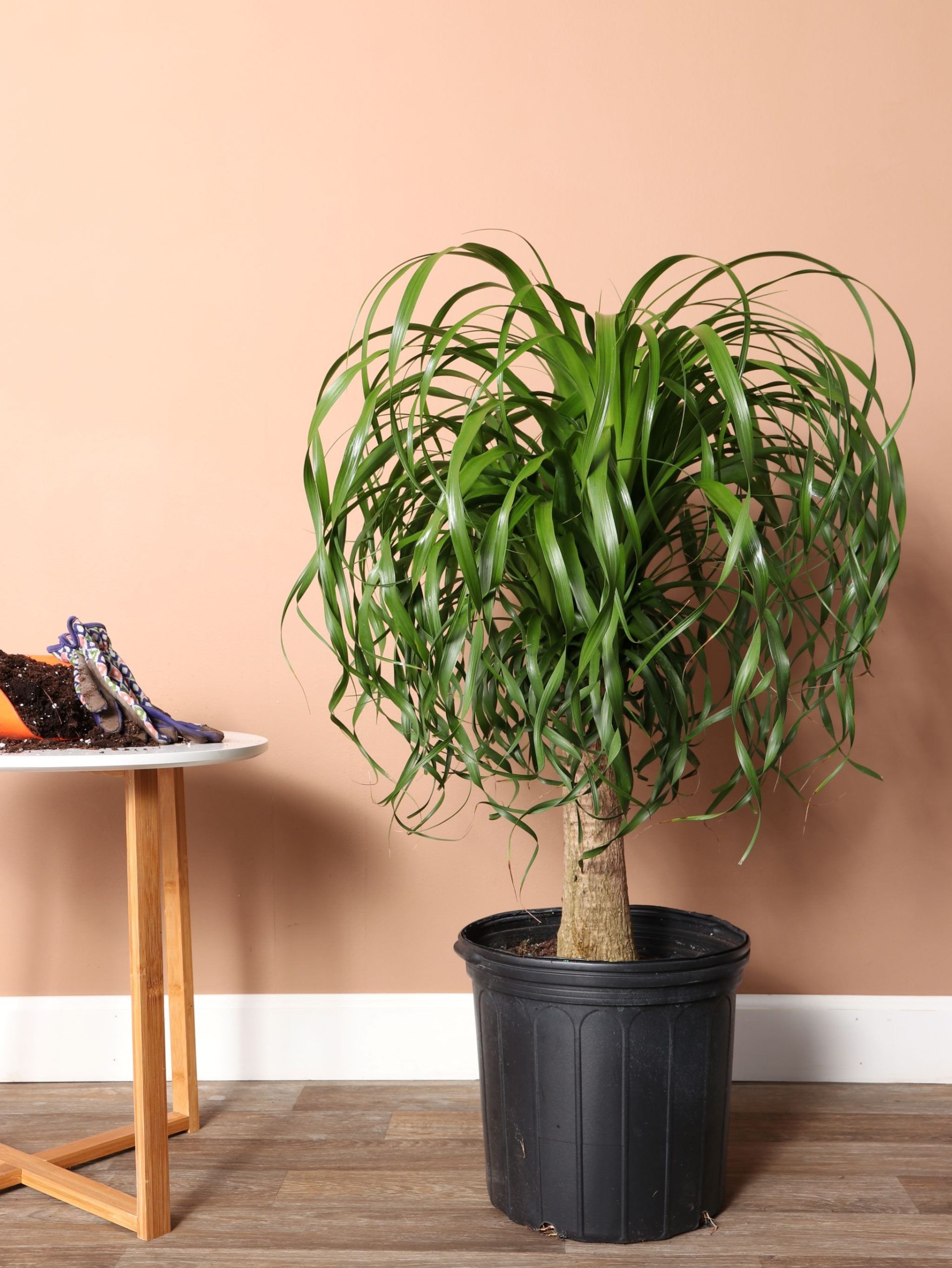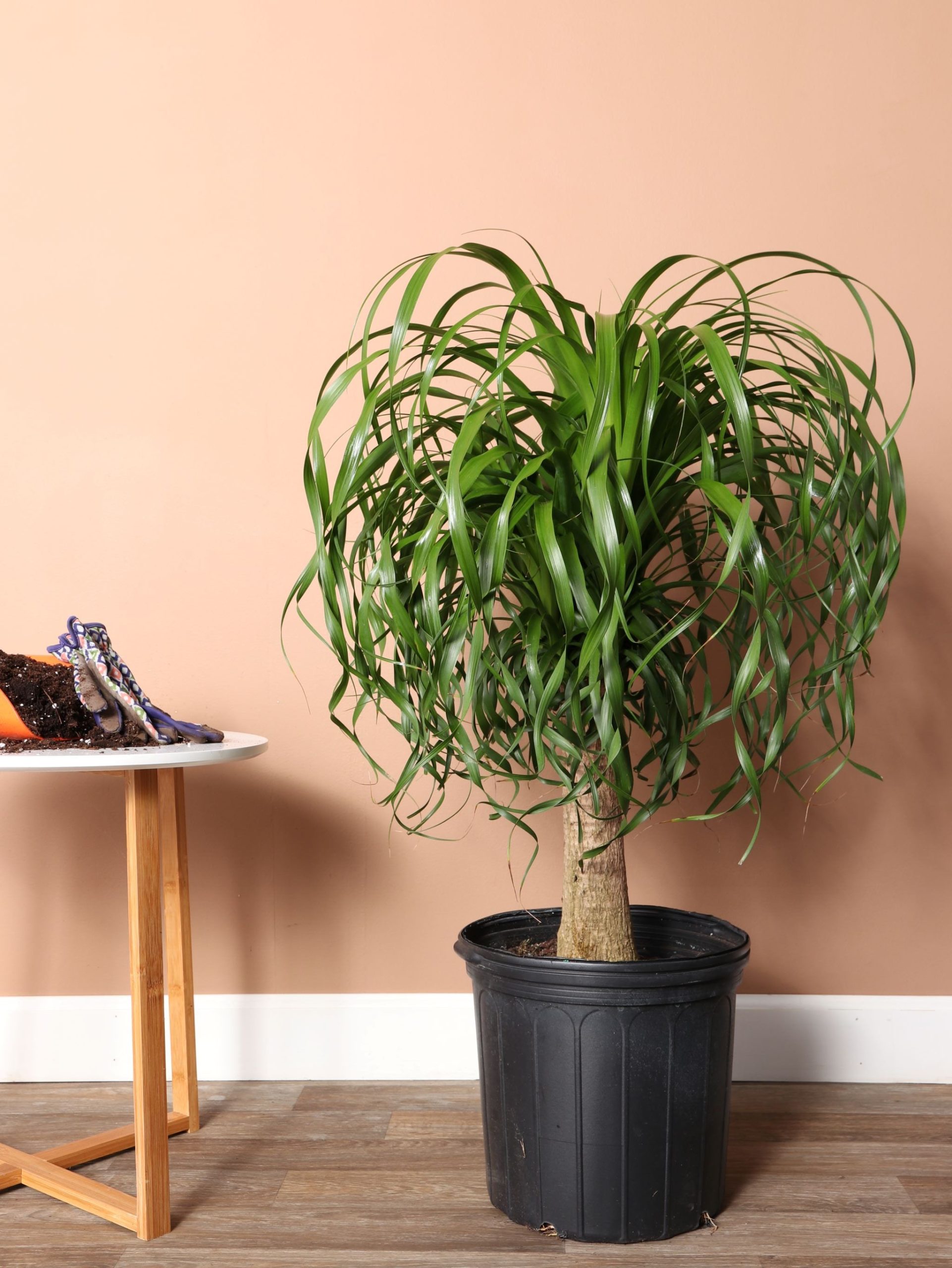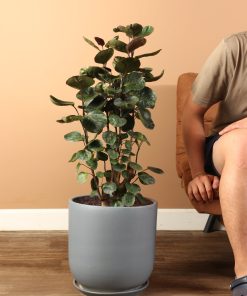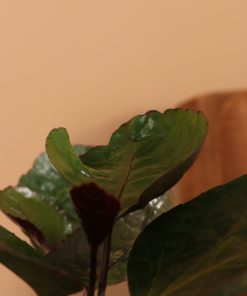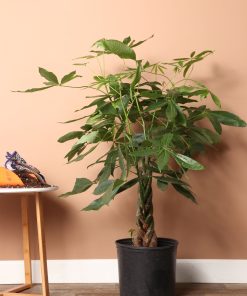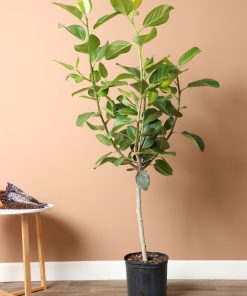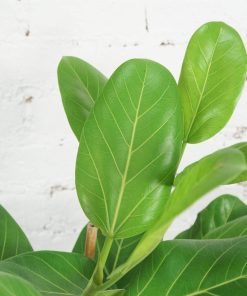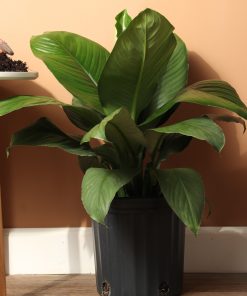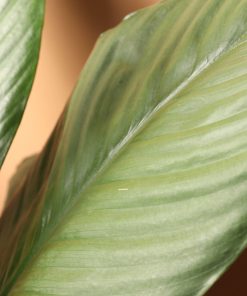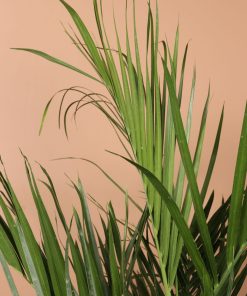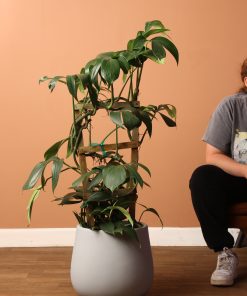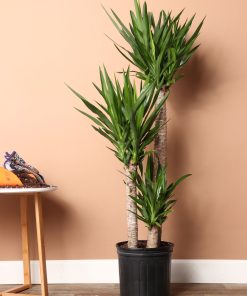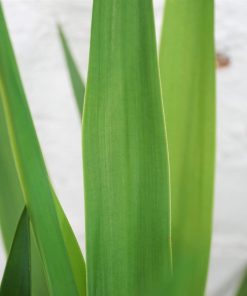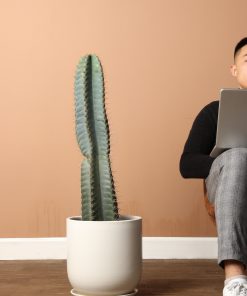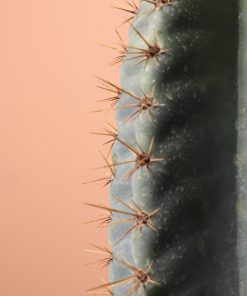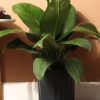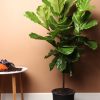We love the playful Ponytail Palm that hails from the tropics in eastern Mexico. It’s such a beauty that it was in high demand around Europe and then shortly after, all over the world. Also known as the Beaucarnea recurvata, the large Ponytail Palm is vocal about what it doesn’t like. However, it’s also a sturdy houseplant that doesn’t need to be watered too often, so that makes things nice. Besides its easygoing attitude, the plant brings a playful and intriguing vibe that will embody the tropics. In the Palm’s natural jungle habitats, it can reach extremely tall heights, sometimes reaching approximately 30 feet tall in ideal conditions. Other names for this plant are the Elephant’s Foot and Bottle Palm. If the large size is too big, you can check out the medium Ponytail Palm we have. Hand-pick your own ponytail palm with Pafe Live!
Ponytail Palm Benefits
The Palm’s dense trunk can keep water inside, making the plant able to thrive for a while without a lot of water. It can bounce back quickly from neglect and will show you noticeable changes and signs when it’s going downhill. Besides that, the Ponytail Palm helps purify the air when it absorbs surrounding airborne toxins.
Tree or Palm?
Sike. It’s actually not a palm at all, nor a tree, but it sure looks like one. The Ponytail Palm is a member of the Agave family, originates in the deserts, and is technically a succulent. The name can be quite deceiving and really only refers to its thick trunk and tree-like appearance. While most in the Agave family tend to grow very slowly, the Ponytail Palm breaks the mold and can reach larger sizes quicker.
Ponytail Waterfalls
Leaves on the Ponytail Palm really look like ponytails. The leaves spill outwards in a waterfall of ponytails that are long, and wirey, like strands of straight hair. Leaves will grow in dense groups that can also make it look like a cleaning mop. When the plant needs a little love and care, its ponytail leaves might begin to get brown. Check the soil and maybe try watering less. What’s the sunlight situation? Reach out to Pafe Plants and we can help set you on the right track.
Elephant Vibes
The Ponytail Palm reaches towering heights when it’s free to expand in its natural habitat. Due to its appearance and boundless growth, others have referred to the houseplant as Elephant’s Foot Tree because when the trunk reaches this bigger size, it looks like the leg and foot of an elephant. The base of the trunk becomes wider than the rest and paired with its muddied off-white color and wrinkled appearance really gives off the elephant leg vibes. Some trunk bases can grow as wide as 4 feet.
Now that you’re an expert with the Ponytail Palm, order this plant by 7PM est to get this plant shipped out of our greenhouse in New Jersey tomorrow (if you are wondering the arrival time, check with the zipcode validator on top of the Add To Cart). Seriously, our plant shipping solution is truly protective and innovative to ensure your plants arrive safe and intact! In case you were still wondering, we WILL send out the EXACT plant that you picked out, just like that of a local nursery or garden center, except we have more and fresher plants to choose from and you can’t find our PAFE fine ceramic planter options anywhere else other than our website 🙂
For any other questions or concerns, please don’t hesitate to reach out to us

